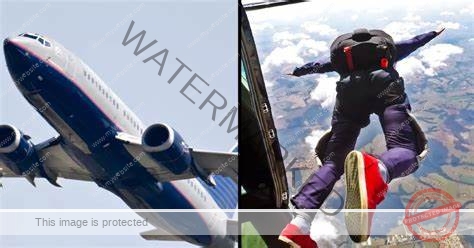Commercial aeroplane travel remains one of the safest modes of transportation. When you're in an aeroplane, high up in the sky, it's normal to won
Commercial aeroplane travel remains one of the safest modes of transportation.
When you’re in an aeroplane, high up in the sky, it’s normal to wonder, “What if something goes wrong? Why aren’t there parachutes for everyone?”
It’s a natural question, fueled by caution. While the idea of having a personal parachute might seem comforting, there are several reasons why commercial aeroplanes simply don’t carry them for passengers.
Let’s take a closer look at how aeroplanes fly and explore the realities of why parachutes wouldn’t be a practical solution in most emergency situations.
What to know about flights
Aeroplanes defy gravity through a scientific principle called “lift.” The aeroplane’s wings are specially designed to create a pressure difference between the top and bottom surfaces as it move forward. This pressure difference generates an upward force that keeps the aeroplane airborne.
Imagine an aeroplane wing as a curved surface. As air flows over the wing, it travels faster across the top due to the curved shape. This creates a region of lower pressure above the wing, while the air pressure remains higher below. This pressure difference creates lift, pushing the aeroplane upwards as seen below.
Aeroplane safety is designed for emergencies
Modern aeroplanes are incredibly safe, with multiple layers of redundancy built into their systems. Pilots undergo rigorous training and have access to advanced technology to navigate even challenging situations. However, even the safest machines can experience emergencies. Fortunately, aeroplanes are equipped with a variety of safety features to handle such situations.
For instance, aeroplanes carry multiple engines, so if one engine fails, the others can keep the plane flying. They’re also designed to glide for long distances without power, allowing pilots to find a safe landing spot in case of an engine issue.
Why parachutes wouldn’t be practical
While the idea of parachuting to safety might seem appealing, there are several reasons why it wouldn’t be a feasible solution for commercial aeroplane passengers:
1. Not enough time: Emergencies on aeroplanes often happen very quickly, leaving little time for passengers to put on parachutes and safely evacuate the aircraft at high altitudes.
2. Training required: Using a parachute safely requires training and knowledge. The average passenger wouldn’t have the necessary skills to navigate a descent from cruising altitude, potentially leading to injuries or worse.
3. Weight and cost: Equipping every passenger with a parachute would add a significant amount of weight to the airplane, impacting fuel efficiency and operational costs. Airlines strive to keep flights affordable for passengers, and the cost of parachutes would inevitably get passed on to travellers.
4. Deployment challenges: Imagine hundreds of passengers trying to deploy parachutes at the same time from a crowded aeroplane cabin. This could lead to midair collisions and entanglement hazards.
5. High altitude dangers: The thin air at cruising altitude (around 30,000 feet) can be dangerous without proper oxygen equipment. Passengers wouldn’t have the necessary gear to survive a jump from such a height without risk of hypoxia (oxygen deficiency).
6. Landing woes: Even if passengers could safely jump, landing a parachute effectively requires open space and some level of skill. In many emergency situations, a safe landing zone might not be readily available.
The focus on crew training and safety measures
Instead of parachutes, airlines invest heavily in crew training and safety procedures. Pilots undergo rigorous training to handle emergencies and land the airplane safely even in challenging situations.

Safety measures on aeroplanes [Travel+Leisure]
Additionally, aeroplanes are meticulously maintained to ensure optimal performance and minimise the risk of malfunctions.
Emergency procedures: What passengers can do
While there are no parachutes on board, passengers play a crucial role in ensuring a safe outcome in case of an emergency. Here’s what you can do:
- Pay attention to the safety briefing: Flight attendants provide important safety information before takeoff. Listen attentively and familiarise yourself with the location of emergency exits and safety equipment.
- Follow crew instructions: In the event of an emergency, the cabin crew will provide clear instructions. Stay calm and follow their directions precisely.
- Know your exit: Locate your nearest emergency exit and ensure the path is clear.
Safety first: A collaborative effort
Commercial aeroplane travel remains one of the safest modes of transportation. While the absence of parachutes might raise a question or two, a combination of advanced technology, well-trained crews, and informed passengers all contribute to a safe and enjoyable flying experience.
So, the next time you board a plane, relax, enjoy the view, and trust that the professionals are working diligently to ensure a smooth and safe journey.

COMMENTS